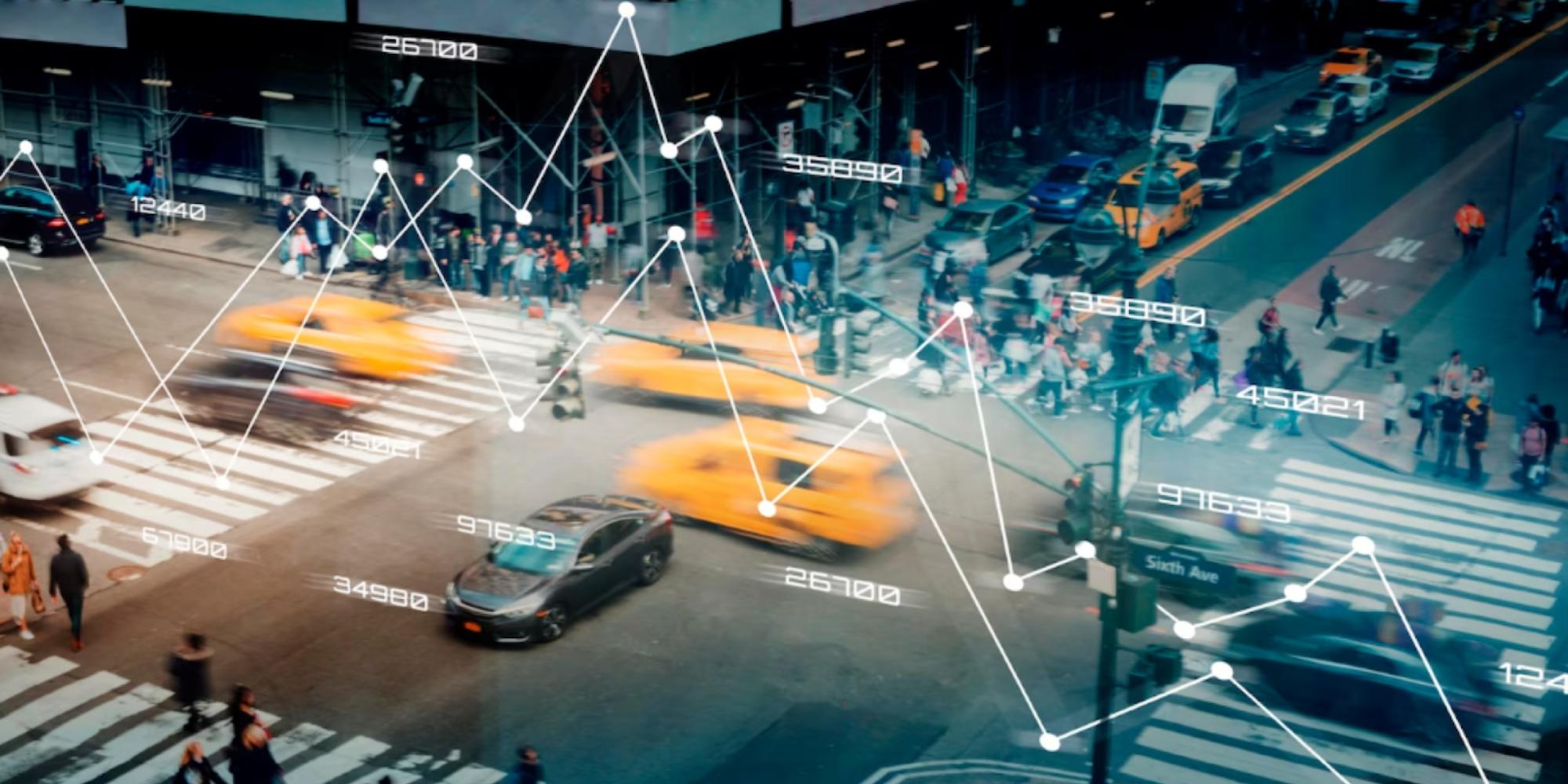
The Growing Use of Internet of Things (IoT) in Digital Signage
Digital signage is becoming a default in marketing and communications strategies. With its dynamic, engaging, and eye-catching displays, it’s become a key player in today’s digital and increasingly interconnected world.
While the use of digital signage has grown rapidly in the past few years and continues to grow at a rate of 8% annually, new technologies are making digital signage more efficient, functional, and attractive.
One of these is the Internet of Things (IoT). Referring to a network of interrelated devices that communicate and exchange information, IoT has a lot of potential when applied in digital signage networks.
IoT Benefits for Digital Signage
Digital signage is an attractive investment for businesses because of its ability to broadcast information, entertainment, or branding and advertising content in real time and in an eye-catching manner.
With IoT, these benefits are enhanced, paving the way for more seamless and efficient management of a digital signage network. In essence, IoT allows the integration of a series of devices, from sensors and cellular modules to gateways and routers, to allow a digital signage screen to expand its functionality.
Real-time Content Updates
Perhaps the biggest impact of an IoT system in digital signage is how it facilitates content updates in real time. When connected to other devices, the screen can respond to changes in situations and display relevant content.
For example, a digital menu board can be integrated with a smart refrigerator to track stocks and inventory. If the fridge detects that an item has sold out, it sends that information to the digital screen, which then immediately removes the item or marks it as “out of stock.”
Not only does this reduce the need for human intervention but it also allows customers to receive updated information and speeds up their decision-making process.
Environment-aware Digital Signage
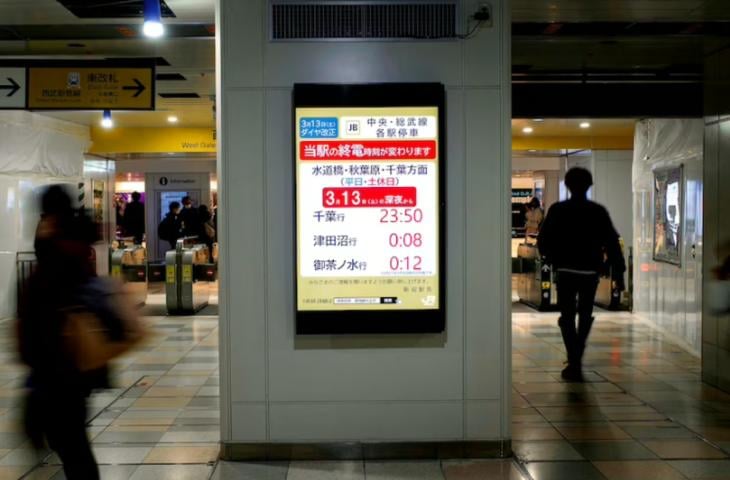
IoT networks can make a digital signage screen more aware of its surroundings and respond to different environmental and situational conditions accordingly. This is possible through the data that is passed between the systems, such as from a sensor that detects the weather and then transmits that information to the digital signage screen.
Say you have a screen that’s connected to a temperature sensor. The latter detects that the current outdoor temperature is over 80 degrees Fahrenheit. When it communicates that to the digital screen, an ad about ice cream or refreshing drinks pops up — relevant and timely content that’s suited to the current weather condition.
There are also screens connected to traffic monitoring systems, fitness trackers, etc. that respond to the data transmitted by these devices. This allows digital signage to deliver the right content at the right time and in the right situation, improving content targeting and relevance.
Touchless Digital Signage
Almost every device today is operated by touch — including digital signage. Allowing for more interactivity, touchscreen displays are being used to facilitate customer self-service.
We see them in the form of ticketing kiosks in transport hubs, self-checkout displays in retail stores and restaurants, queueing screens in banks and healthcare facilities, or digital information kiosks in malls and hotels.
But as consumers become more concerned about cleanliness, especially after the onslaught of the COVID pandemic, businesses are favoring more touchless solutions. IoT can help with that. One example is connecting the screen to the customer’s smartphone to allow them to get tickets or line up for queues through their mobile devices.
In an increasingly interconnected world brought about by innovations in IoT, there are more possibilities for businesses to offer touchless solutions to improve customer experiences.
Voice-activated Digital Signage
IoT can also take interactivity a step further through voice activation. Integrating digital signage with systems like Amazon Alexa, Google Assistant, or Apple’s Siri will allow the user to control the display with voice instructions.
The benefit for your business is reduced cost — you won’t have to invest in a touchscreen display, which is fairly expensive. On the other side of things, you also improve your screen’s accessibility, catering to vision-impaired or physically disabled users.
Use Cases of IoT Digital Signage
IoT is part of the bright future ahead of the digital signage industry. In fact, it’s already being used today, from the interior screens in malls and airports to outdoor digital signs in buses and transport hubs.
Here are examples of two key industries that are taking advantage of IoT in digital signage.
Retail
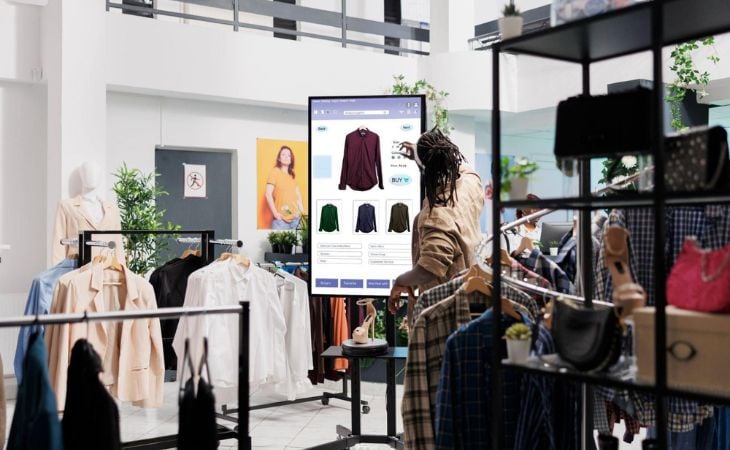
The retail industry is the biggest user of IoT digital signage, taking advantage of its ability to improve advertising, attract attention, and generate impulse purchases.
Product Promotion
IoT can be beneficial in promoting products in a retail store. They can work hand-in-hand with sensor technology installed in in-store items to detect which ones a customer is looking at and touching. The moment a customer interacts with a product, a digital display responds by showing information about it, driving their purchasing decisions.
Personalized Promotions
Especially in today’s information age, most customers research a product they’re interested in before even walking into a store to make a purchase. When utilized effectively, IoT can be valuable in this situation.
A retail store can pool data from its websites, apps, and other online platforms to learn more about what its customers are interested in. And when a customer enters the store, their mobile devices on hand, data about their online behaviors will be communicated to the digital display, which then shows related promotions and specials for the products they looked at online.
Healthcare
Data shows that the applications of IoT in the healthcare industry will be worth $188 billion by 2024. This growth is thanks to the industry’s use of IoT in its technologies, including ingestible sensors, intelligent insulin pumps, connected contact lenses, and of course, digital signage.
Waiting Room Entertainment and Queue Management
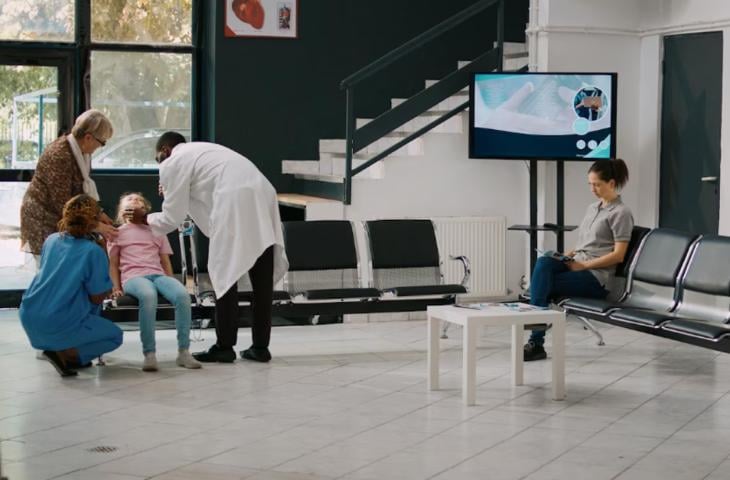
Digital signage can reduce perceived wait time by as much as 35%, making it a valuable investment in healthcare clinics. It takes the patients’ attention away from the wait itself and instead provides a welcome distraction, whether the display shows clinic information, educational videos, or entertainment.
While they’re waiting, digital signage that integrates IoT systems can also streamline queue management in the clinic. When they walk in and interact with a digital display, the screen can send their data to the doctor’s office or receptionist, confirming their appointments and sharing patient information to speed up the intake process.
In-patient Examinations
A digital signage screen that’s part of an IoT network can be valuable in diagnosing illnesses, recommending treatments, and discussing details with patients. The screens can be integrated with EHR and other medical data sources to display patient information on monitors and easily communicate the findings of their examination.
Alert Handling
Patients admitted to hospitals are linked to an IoT ecosystem that delivers important data in an instant and ensures fast attention and care. The most common devices are sensors that track vital signs and other health metrics. In case of any change in the patient’s stats, the nurses and doctors are immediately alerted so they can go and check on the patient.
This alert handling system is usually connected to a medical professional’s phone. But a more efficient solution is to use a digital sign. The moment the sensors detect something wrong, the screens can broadcast an emergency alert to the whole staff, ensuring maximum visibility and faster response time.
Taking Advantage of IoT in Digital Signage
IoT-enabled digital signage presents a plethora of opportunities for businesses to enhance their marketing and communication efforts while streamlining digital signage management. In essence, IoT systems maximize a digital sign, allowing better optimization and utilization of its features. In the end, that translates to improved processes and user experiences.
Incorporate IoT into our digital signs with the use of supportive software. Start a free trial with Rise Vision to learn more about how we can support your IoT-enabled digital signage campaign.
More From Our Blog
-
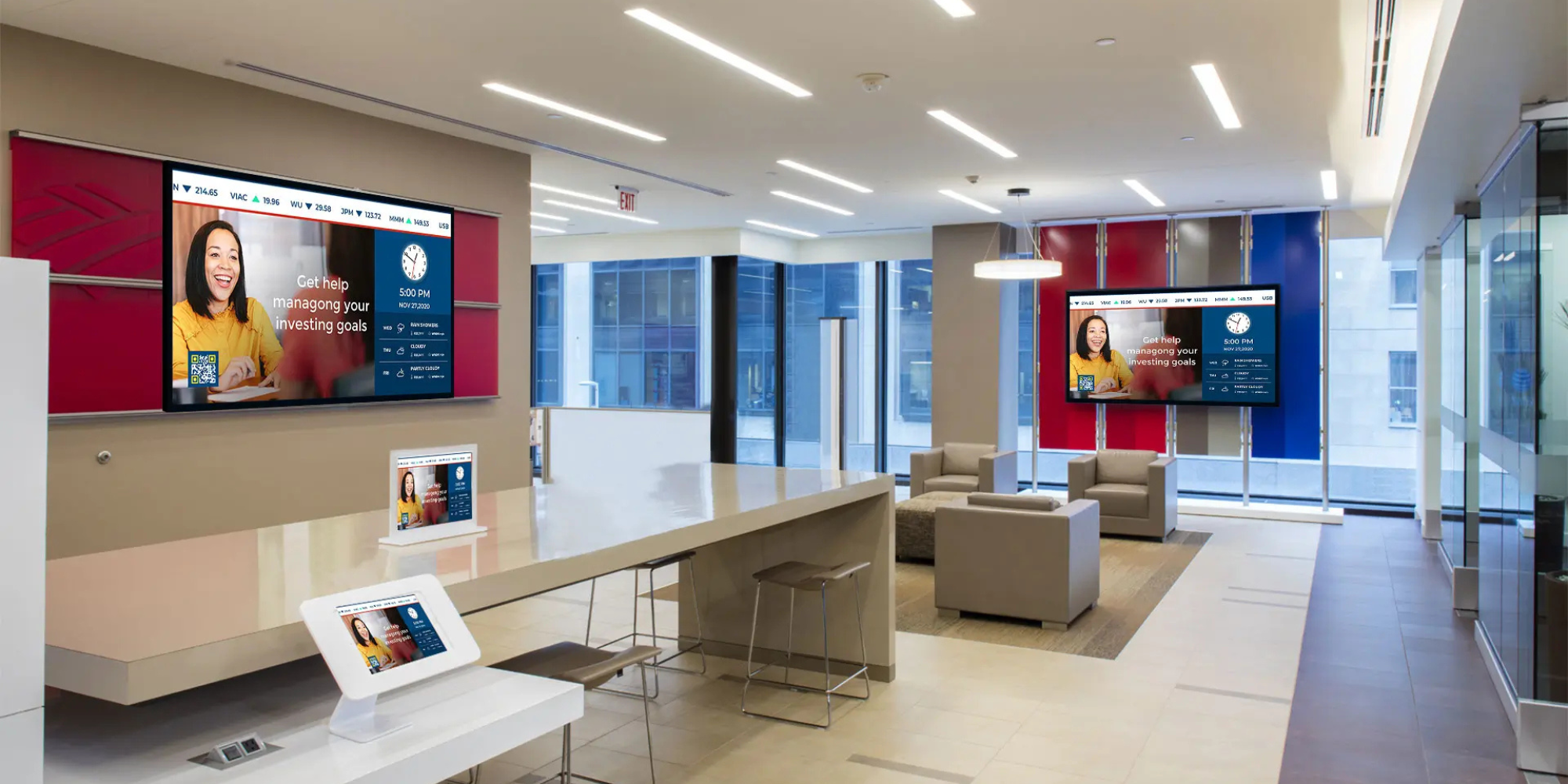
How Effective is Digital Signage?
Digital signs are revolutionizing. That's the short answer. But if you're trying to convince leadership to invest in screens for your school hallways, hospital waiting areas, or manufacturing floor,[…]
Read More -
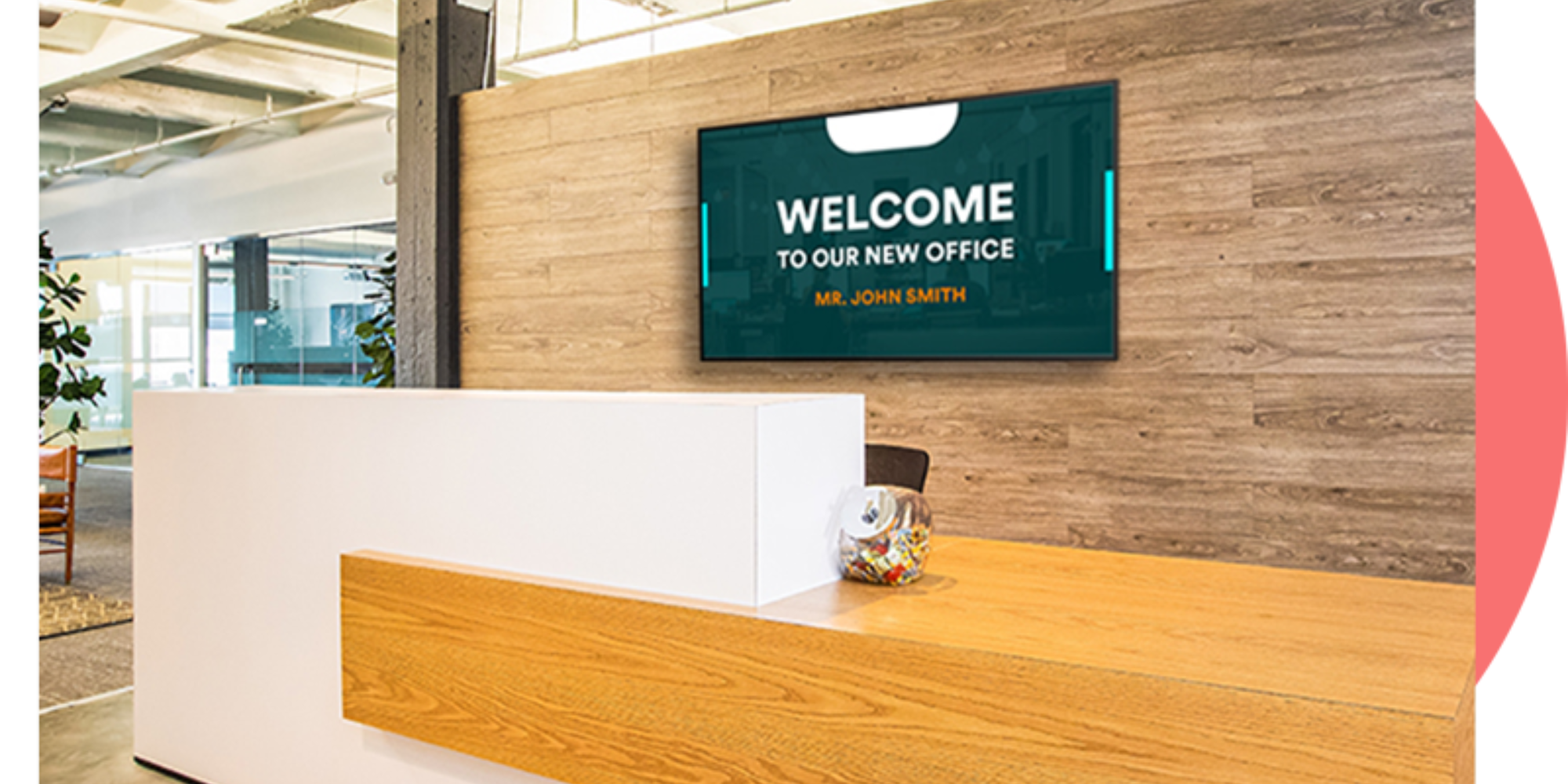
10+ Office Welcome Sign Ideas
Getting a welcome sign on your office display shouldn't take all afternoon. Rise Vision makes it pretty straightforward: pick a template, swap in your logo, and push it to your screen. Done. The[…]
Read More -
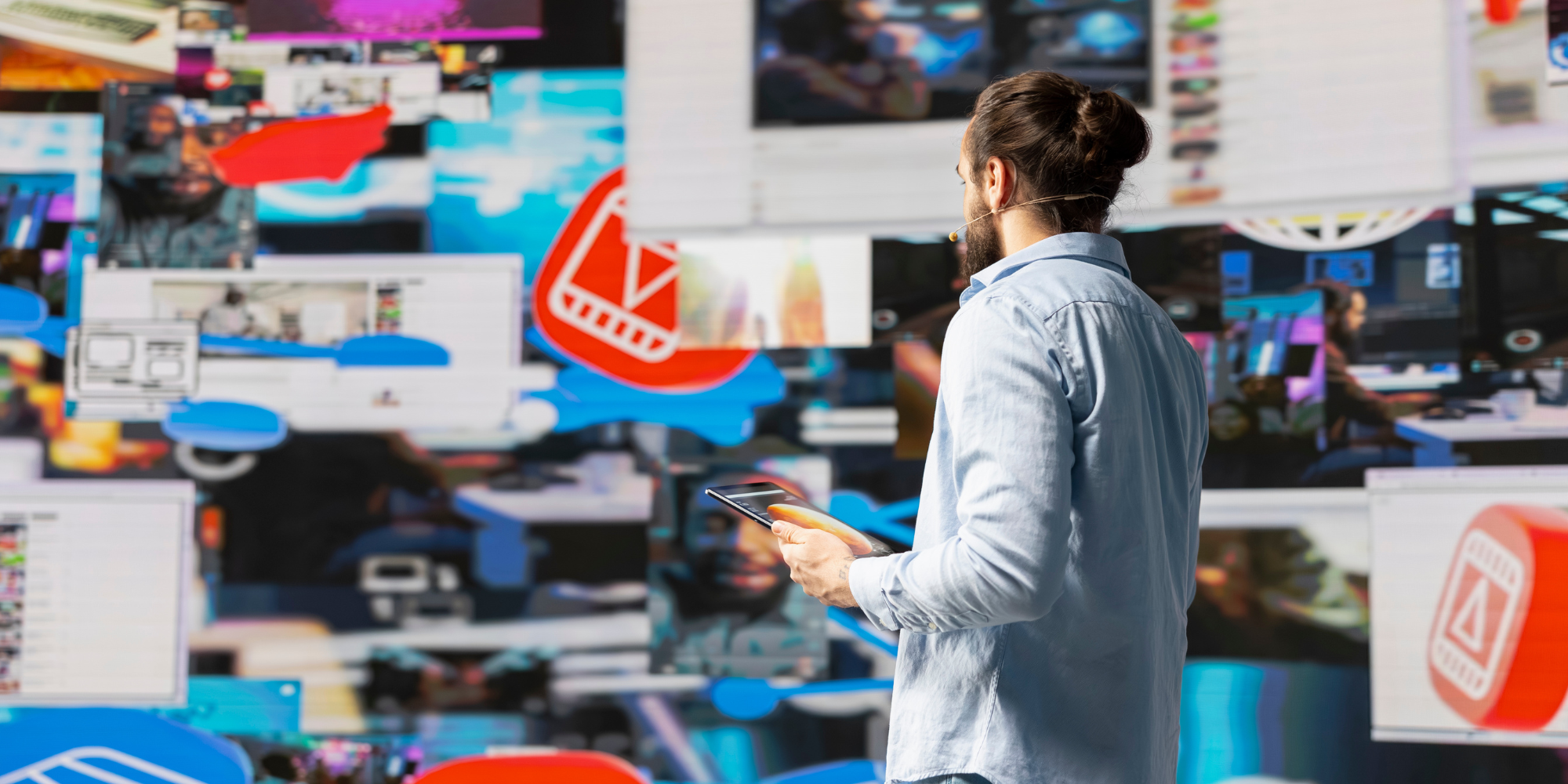
Top Trends in Digital Signage Display Technology for 2025
Digital signage technology is evolving rapidly, with new innovations emerging every year. In this rapidly evolving landscape, businesses must adapt quickly to keep up with the latest advancements in[…]
Read More
Keep Your Displays Interesting – Pick New Templates Every Week!
Every week, we send template recommendations that will make you look great and improve your audience experience. And the best part, they save up to 16 hours of content creation time every week!
12,300+ Organizations Trust Rise Vision, You Can Too
Schedule a Free Demo
You deserve the #1 all-in-one platform for digital signage, screen sharing, and emergency alerts.



































